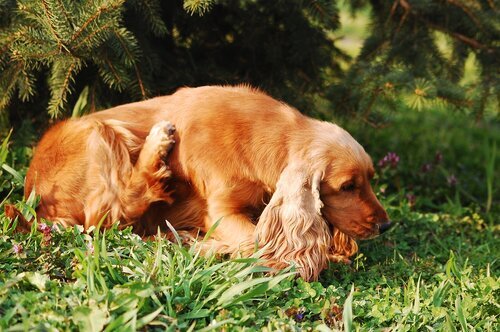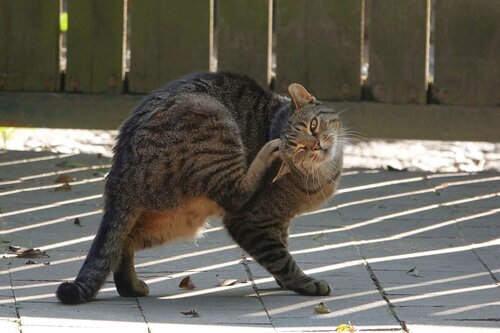The best products to get rid of fleas
Fleas! It’s every pet parent’s worst nightmare. Just the thought of finding them when patting your cat or dog is enough to give you goosebumps.
What are fleas?
Fleas are tiny flightless insects that survive on the blood of mammals and birds. Not just limited to animals, even humans can be a host for fleas.
The flea lifecycle starts with eggs, then move to larva, then pupae and then adult. They can live up to 2-3 months, but without a host, only a few days.
Fleas can jump around 18cm high and 33cm long making it easy for them to jump from one host to the other. This is why it’s important to treat all animals in your household if one has fleas!
Fleas thrive in many climates but prefer moist, humid and shady areas.
How does my pet catch fleas?
Fleas often jump from host to host, so if you’ve taken your pet to a park, groomer, vet or kennels and they come into contact with another animal that has fleas, you might end up with a nasty surprise.
Fleas also live on native animals so when those pesky possums visit your backyard, they could be leaving fleas which then attach to your pet.
How can I tell if my pet has fleas?
If your pet has fleas, you’ll usually be able to tell. Sometimes you can even see them jumping around on your pet’s fur – gross!
Usually though, you’ll notice your pet scratching more than usual or shaking their head, you’ll see one crawling around on your pet’s fur, or you’ll see a bunch of black spots (flea poo) above your pet’s tail.
You might also see them in your home on carpet, on your pet’s bedding or even on your hardwood floors.
How can I prevent my pet from getting fleas?
Prevention is always better than a cure so staying up to date with flea prevention is one of the easiest ways to prevent fleas.
Summertime is prime time for catching fleas so make sure you do regular checks of your pet after they have been in contact with other animals.
How can I treat my pet if they have fleas?
Dogs and cats will need different flea treatments. The best type of flea treatment is also determined by your pet’s weight. This is very important as an overdose of flea treatment can be detrimental to your pet’s health.
Flea treatments for cats
Flea treatments for cats usually come in a liquid or tablet form. There are also collar options available.
Advocate is the most popular flea treatment as it treats fleas and worms in one. It comes in tiny vials which you squeeze onto the back of your cat’s neck. Other great flea treatment brands include Bravecto, Advantage, Revolution, Activyl and Comfortis.
If your cat is easily given tablets, Capstar is a tablet that kills adult fleas fast.
Flea treatments for dogs
Flea treatment for dogs comes a wide variety of forms including chews, liquid, tablets, sprays, collars and shampoos.
Nexgard Spectra is a great flea prevention chew with beef flavouring so your pooch actually wants to swallow it.
Other great flea prevention chew brands include Sentinel and Comfortis.
Advocate, Bravecto, Activyl, and Revolution are spot on treatments that go on the back of your dog’s neck.
Flea collars are great when you tend to forget your monthly treatment, and if you’re brave, you can try and give your dog a flea bath.
Getting rid of fleas in your home
If your pet has fleas, you can’t just treat them and expect them to go away.
You need to treat the whole house!
A flea bomb is a great way to kill fleas throughout your home. After using, vacuum thoroughly and wash all bedding in boiling hot water.
You can also use a spray to spray bedding, carpets and anywhere else your pet sleeps.
At Doncaster vet hospital, we have wide range of flea treatment products to help prevent and treat the infestations of fleas on your dog or cat. You can view our list of stocked flea prevention brands here.
Need advice? Our friendly vet nurses can help you find the best flea prevention for your dog or cat or help you treat them.



